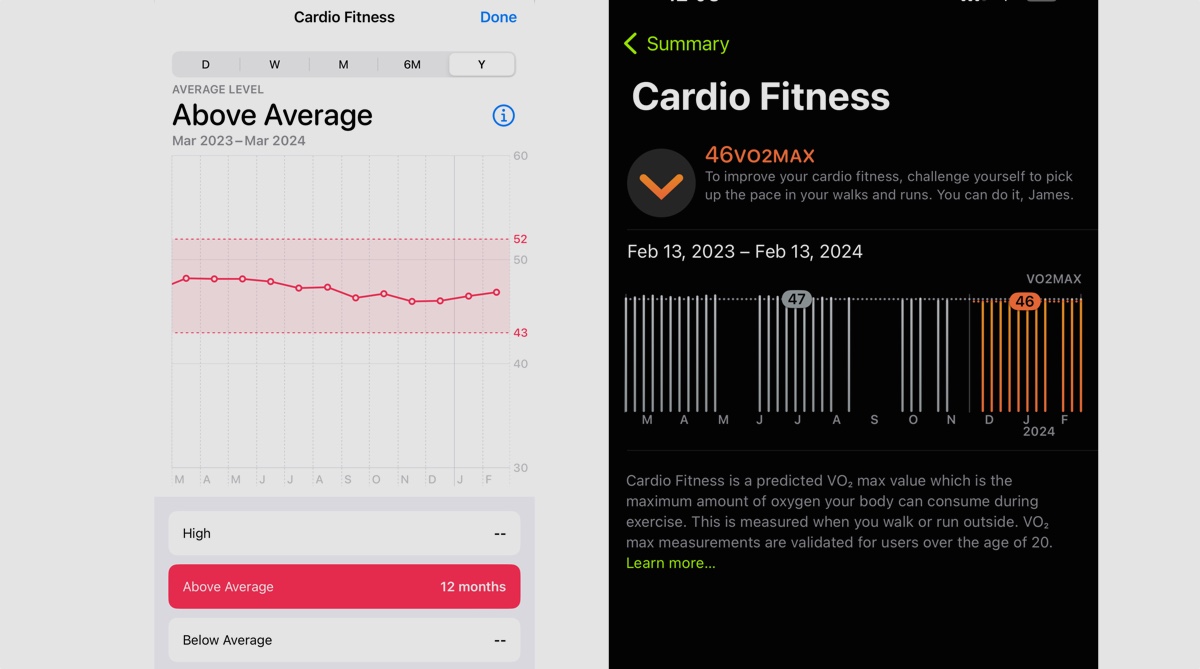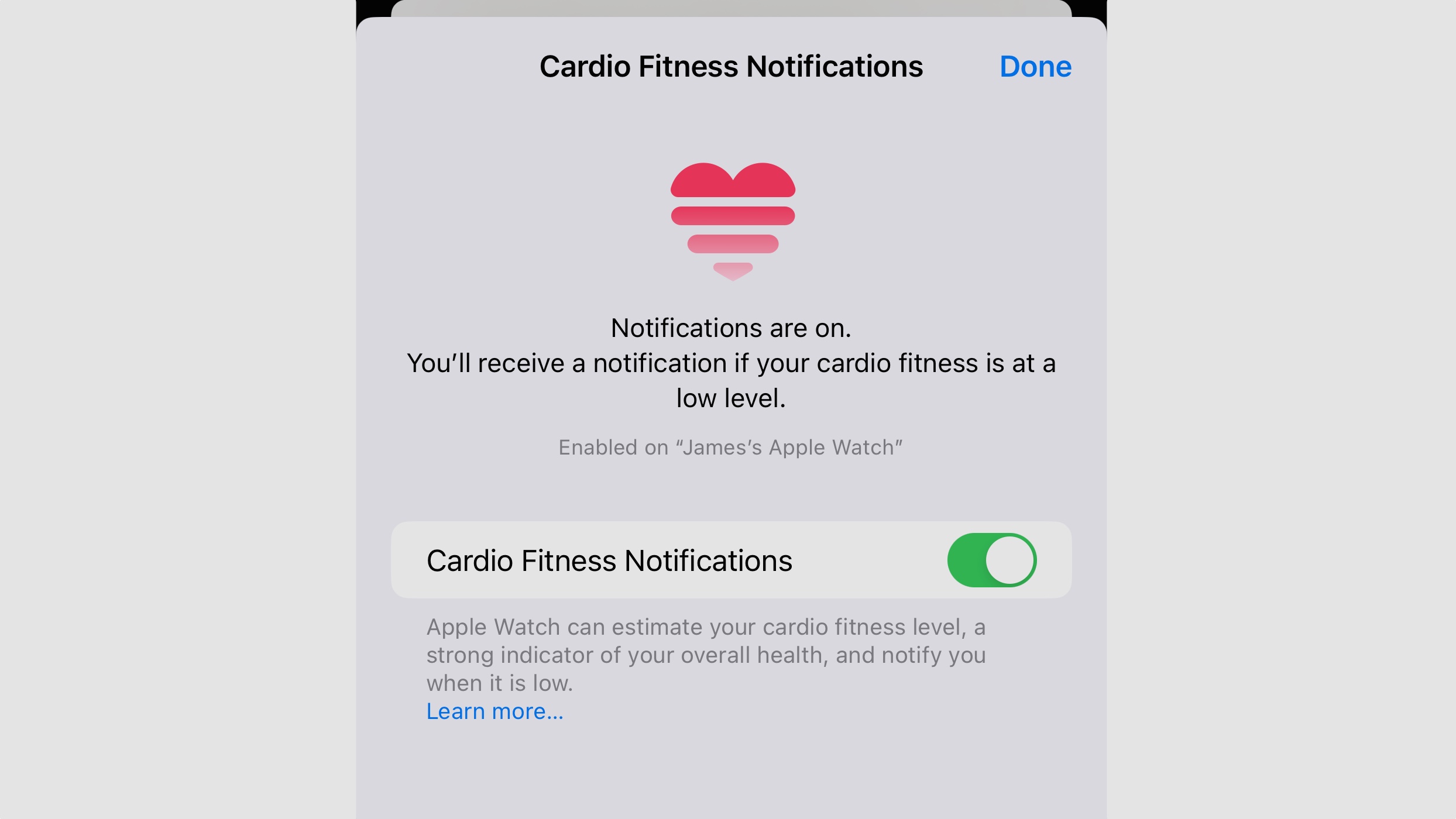
If you use an Apple Watch, regardless of your workout regimen, the Cardio Fitness score is there to measure your fitness level.
Cardio Fitness Score is a more user-friendly name for VO2 Max, a universal and established metric of fitness based on how much oxygen your body can transfer to your blood. The more you can transfer, the fitter you are.
To measure VO2 Max properly, you need to run on a treadmill, building up to total exhaustion, and wear a mask to measure every drop of oxygen entering your body. Then, you need to have your finger pricked and a blood test taken every few minutes. Sound fun? It’s not – I’ve done it multiple times, and it’s the worst.
So having VO2 Max estimated by a smartwatch is far better.
How it works
The Apple Watch estimates VO2 Max by monitoring outdoor workouts, such as walking, running, and hiking. They need to be outdoor because the speed you’re traveling and the exertion on your body are important factors.
The Apple Watch will monitor this automatically, and unlike Garmin and other wearables, you don’t necessarily need to complete a GPS-tracked workout for it to work.
Apple can actually estimate lower VO2 Max levels than rivals, as it looks to use its Cardio Fitness Score to motivate people with low levels of fitness. You can receive Cardio Fitness notifications, and the Apple Watch will notify you if it deems your fitness levels are low.
Find Cardio Fitness Score in Fitness app
You can see your score by going to the Fitness app, and then choosing Cardio Fitness Score. You will see your score and an arrow to show you whether you’re trending up or down. As ever, though, Apple doesn’t put all your information in one place, so to get more detail, head to the Health app.
How to Find Your Cardio Fitness Score Trends
1. Open the Health app on iPhone.
2. Go to the "Browse" tab on iPhone or open the sidebar on iPad.
3. Tap "Heart," and then "Cardio Fitness."
4. View your daily, weekly, or yearly average by tapping "D," "W," or "Y."
5. Tap "Show All Cardio Fitness Levels" to compare your score with others of your age and sex.
Understanding Your Score
Wareable
In the Health app, Apple will show your score as High, Above Average, Below Average, or Low, which adds some crucial context to the VO2 Max number.
Fitness levels change as you get older, so these bands will account for your age, sex, and other lifestyle factors.
You can also see your Cardio Fitness Score over day, week, month, six-month, or year intervals.
From our experience, it’s unlikely you will see meaningful change over anything shorter than a month, and it’s probably best to look at VO2 Max over long periods.
As you can see from my data, I’ve suffered a small decline in the last few months. That’s not surprising given that I have a new baby – and have been focusing on different types of workouts. But it’s still a good kick to get out there and do more cardio to get it back up.
Turn on notifications
Wareable
You will also be prompted to turn on notifications for low Cardio Fitness level. This will be promtped when you start up Apple Health for the first time, and intermitently.
However, you can do it anytime by going to Health > Browse > Heart > Cardio Fitness and going to Cardio Fitness Notifications (which is right at the bottom).
How we test
